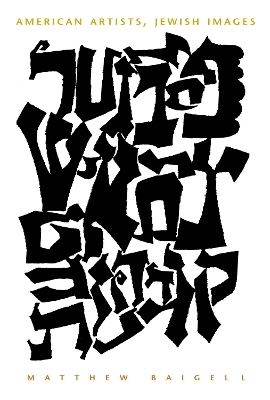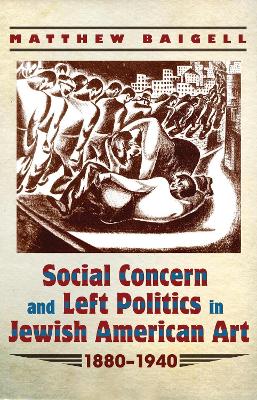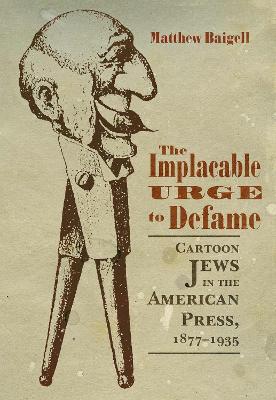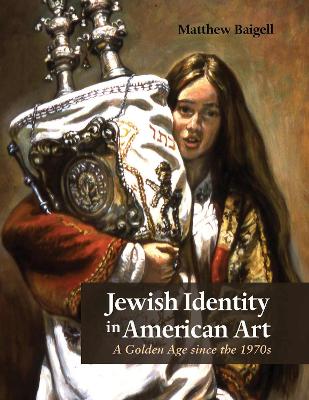Judaic Traditions in LIterature, Music, and Art
4 total works
Born over a fifty-year period, the artists in this volume represent several generations of twentieth-century artists. Examining the work of such influential artists as Mark Rothko, Max Weber, and Ruth Weisberg, Baigell directly confronts their Jewish identity - as a religious, cultural, and psychological component of their lives - and explores the way in which this influence is reflected in their art. Drawing upon their common heritage, Baigell reveals the different ways these artists responded to the Great Immigration, the Depression, the Holocaust, the founding of the state of Israel, and the rise of feminism. Each artist's varied Jewish experiences have contributed to the creation of a visual language and subject matter that reflect both Jewish assimilation and Jewish continuity in ways that inform modern Jewish history and changes in present-day America. Offering a fresh examination of well-known artists, as well as long overdue attention to lesser-known artists, Baigell's incisive observations are indispensable to our understanding of the Jewish themes in these artists' work. Written in a lively and spirited prose, this book is compulsory reading for those interested in modern American art and Jewish studies.
Social Concern and Left Politics in Jewish American Art 1880-1940
by Matthew Baigell
Published 3 April 2015
Of the late nineteenth- and early twentieth-century Jewish artists, a large number turned toward radical socialist politics. These artists, even the most secularized among them, were deeply influenced by the Jewish traditions, teachings, and culture in which they were raised. The communal thrust of Judaism that calls upon Jews to bear the responsibility for the moral, spiritual, and material welfare of their community informed the creative output of these artists.
Baigell explores the meaningful yet little-examined connections between religious heritage, social concerns, and political radicalism in the Jewish American art world from the time of the Great Migration from Eastern Europe in the 1880s to the beginning of World War II. Focusing on political cartoons published in left-wing Yiddish- and English-language newspapers and magazines, Baigell shows how artists commented on current events using biblical and other Jewish references within a medium of expression that had the widest possible audience. Set against the backdrop of the Russian Revolution, the Depression, and the rise of fascism during the 1930s, the book examines the work of such well-known artists as William Gropper and Mark Rothko, and brings to light the work of lesser-known artists, such as Leon Israel and Louis Ribak. Artists' personal correspondence, newspaper articles, and the writings of art critics all reveal the intimate connections between Jewish memories, religious customs, and radical socialist concerns.
Baigell explores the meaningful yet little-examined connections between religious heritage, social concerns, and political radicalism in the Jewish American art world from the time of the Great Migration from Eastern Europe in the 1880s to the beginning of World War II. Focusing on political cartoons published in left-wing Yiddish- and English-language newspapers and magazines, Baigell shows how artists commented on current events using biblical and other Jewish references within a medium of expression that had the widest possible audience. Set against the backdrop of the Russian Revolution, the Depression, and the rise of fascism during the 1930s, the book examines the work of such well-known artists as William Gropper and Mark Rothko, and brings to light the work of lesser-known artists, such as Leon Israel and Louis Ribak. Artists' personal correspondence, newspaper articles, and the writings of art critics all reveal the intimate connections between Jewish memories, religious customs, and radical socialist concerns.
From the 1870s to the 1930s, American cartoonists devoted much of their ink to outlandish caricatures of immigrants and minority groups, making explicit the derogatory stereotypes that circulated at the time. Members of ethnic groups were depicted as fools, connivers, thieves, and individuals hardly fit for American citizenship, but Jews were especially singled out with visual and verbal abuse. In The Implacable Urge to Defame, Baigell examines more than sixty published cartoons from humor magazines such as Judge, Puck and Life and considers the climate of opinion that allowed such cartoons to be published. In doing so, he traces their impact on the emergence of anti-Semitism in the American Scene movement in the 1920s and 1930s.
Unlike earlier generations, Jewish American artists born between the 1930s and the early 1960s were among the first to overtly embrace and challenge religious themes in their work. These Jewish artists felt comfortable as assimilated Americans yet developed an overwhelming desire to explore their cultural and religious heritage. They became the first generation willing to take risks with their material and to discover new ways to create art with Jewish religious content.
In his most recent book, Baigell explores the art and influences of eleven artists who enlarged the parameters of Jewish American art through their varied approaches to subject matter, to feminist concerns, and to finding contemporary relevance in the ancient texts. Along with detailed essays on each artist, the book includes nearly one hundred stunning illustrations that testify to the beauty, depth, and importance of the paintings and sculptures produced by this groundbreaking generation of artists.
In his most recent book, Baigell explores the art and influences of eleven artists who enlarged the parameters of Jewish American art through their varied approaches to subject matter, to feminist concerns, and to finding contemporary relevance in the ancient texts. Along with detailed essays on each artist, the book includes nearly one hundred stunning illustrations that testify to the beauty, depth, and importance of the paintings and sculptures produced by this groundbreaking generation of artists.



